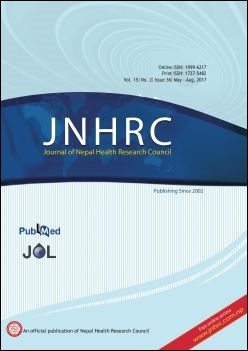Reporting of Medical Errors in Autopsied Cases
Keywords:
Death, ectopic pregnancy, medical error, vacuum extraction deliveryAbstract
This report describes the cases autopsied at B. P. Koirala Institute of Health Sciences- Nepal, during the period of two years in which the treatment provided falls below the accepted standard practice causing the death of the patient. Postmortem examination provides an opportunity to find out the actual cause of death in which the cause of death is suspicious. Sometimes the cause of death found through postmortem examination is different from the clinical cause of death. The autopsy finding on the cause of death will help doctors even to think about unusual conditions that lead to death and hence apply preventive measures for those unusual conditions. The cause of medical error is not always due to the doctor’s mistake, but sometimes also due to the obsolete hospital protocol. The autopsy reporting of medical errors can be used to identify lacunae in hospital protocols, problem-prone clinical processes and suggest interventions that may reduce negligence.Downloads
Download data is not yet available.
Abstract
1023
PDF
1136
Downloads
Published
2017-09-15
How to Cite
Sah, B., Yadav, B. N., Jha, S., Ayer, A., & Yadav, A. K. (2017). Reporting of Medical Errors in Autopsied Cases. Journal of Nepal Health Research Council, 15(2), 197–201. Retrieved from https://www.nepjol.info/index.php/JNHRC/article/view/18196
Issue
Section
Case Reports
License
Submission of the manuscript means that the authors agree to assign exclusive copyright to JNHRC. The aim of JNHRC is to increase the visibility and ease of use of open access scientific and scholarly articles thereby promoting their increased usage and impact. Hence, JNHRC grants permission to read, download, copy, distribute, print, search, or link to the full texts of these articles which is available online (http://jnhrc.com.np) freely.
The articles in this journal are licensed under a Creative Commons Attribution 4.0 International License.

